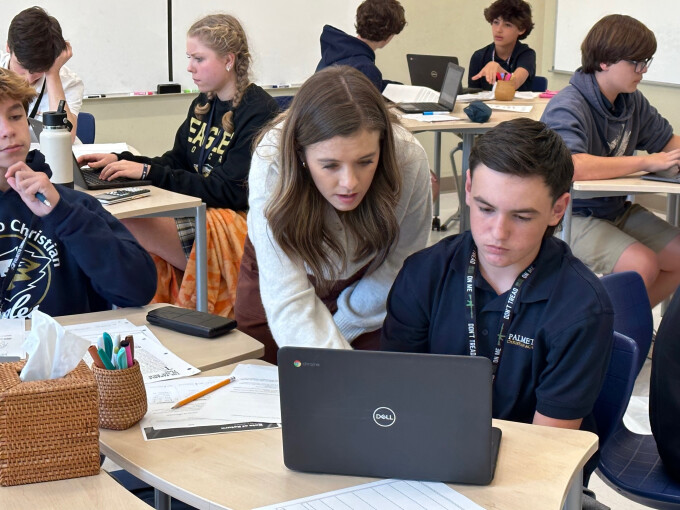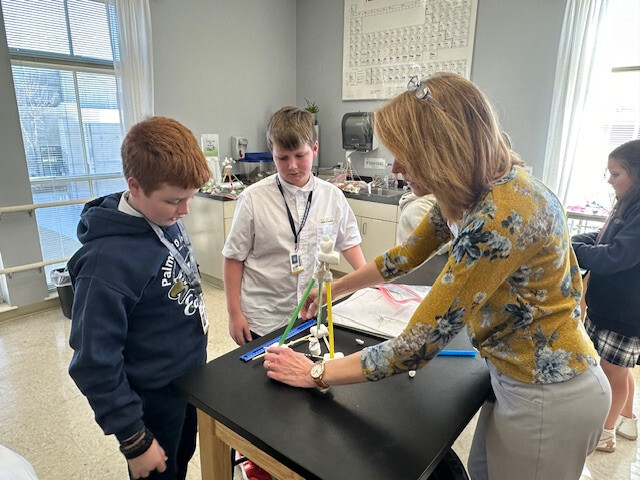Personal Finance Course Equips Students With Financial Literacy

PCA High School students have the unique opportunity to gain a comprehensive understanding of financial management through our Personal Finance class. Faculty member Lindsay Kendrick, who teaches the course, says it’s something that she wishes she could have taken in high school. “Students graduate high school and college and are expected to know how to buy a car, what taxes are, the process of buying a home, and to navigate the nuanced world of investing and retirement. They aren't ever taught this, but rather are expected to figure it out,” says Kendrick. “I am so grateful that we offer this course here at PCA to allow students to grow in their knowledge of finance, budgeting, saving, and much more so that they are equipped to honor the Lord and serve him and those around them well!”
Throughout the course, students cover a variety of topics from budgeting basics, money saving skills, credit and debt, career readiness, college planning, the role of insurance, taxes - all the way to investing and retirement.
So how do our students feel about this essential life skills course? Junior Sophie Baumgardner says she believes it will serve her well in the years ahead. “In Personal Finance, I have learned the valuable foundations for managing my finances and building wealth to ensure a solid financial future. I now understand that having freedom in my finances includes having a budget with an emergency fund, getting and staying out of debt, giving, and knowing who I am when it comes to money. I appreciate that PCA offers this class because I can see the importance of teaching young adults how to handle their money, truly preparing them for the future.”
PCA’s Personal Finance course not only provides practical knowledge but also instills values of responsibility, integrity, and stewardship. Ms. Kendrick explains, “1 Timothy 6:17-21 says, ‘Command those who are rich in this present world not to be arrogant nor to put their hope in wealth, which is so uncertain, but to put their hope in God, who richly provides us with everything for our enjoyment. Command them to do good, to be rich in good deeds, and to be generous and willing to share. In this way they will lay up treasure for themselves as a firm foundation for the coming age, so that they may take hold of the life that is truly life.’ My prayer is that after leaving our class the students will see the value that understanding and managing your finances will add to your future and that they will know what it means to be good stewards of all that the Lord has blessed us with!
Through our Personal Finance course, we’re excited to equip our students to become financially responsible adults who are able to navigate the complexities of personal finance with confidence and integrity, always giving glory to God!

